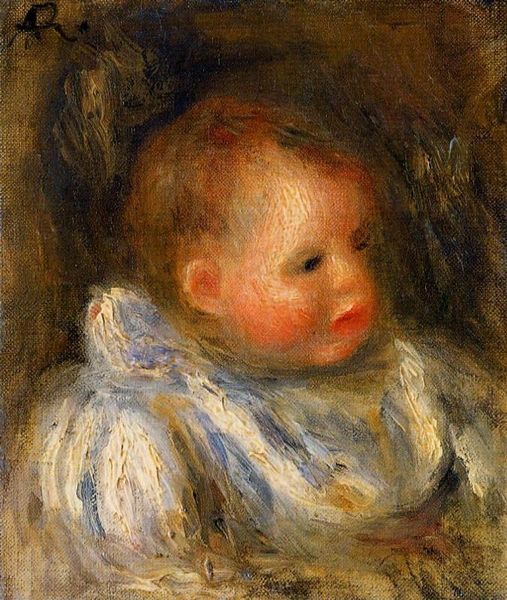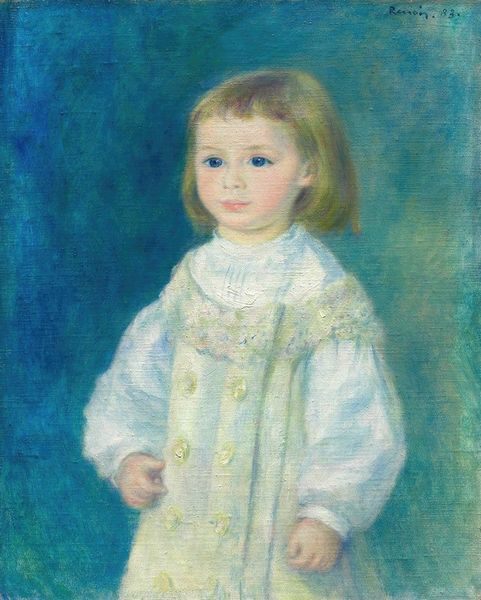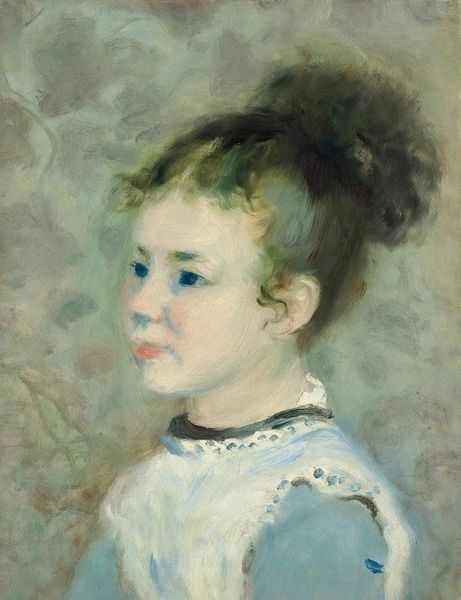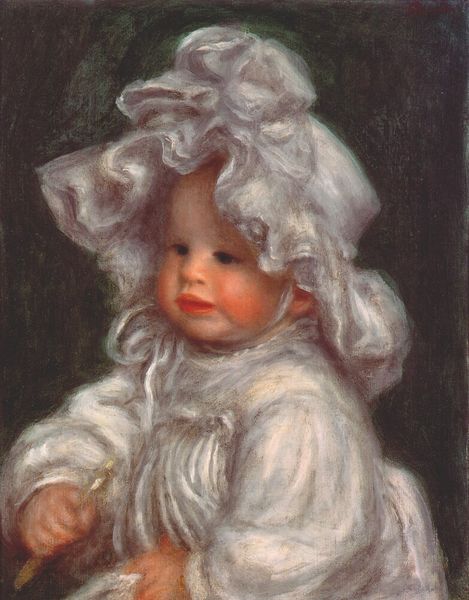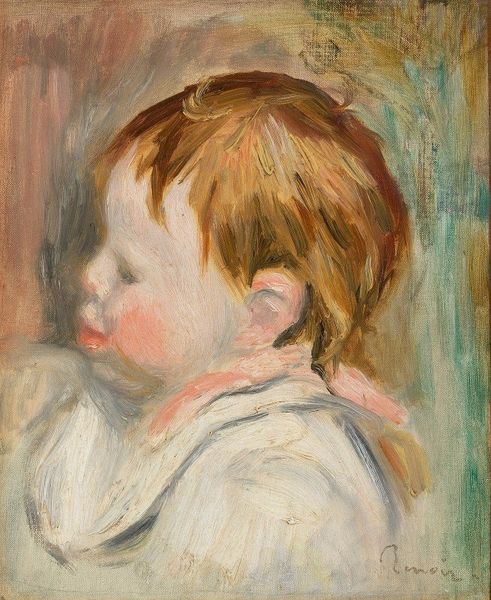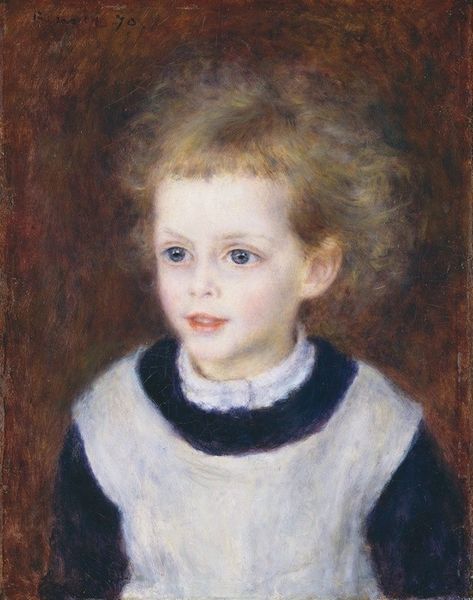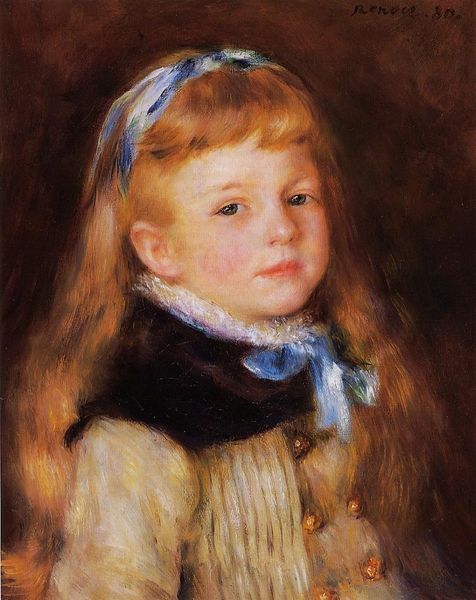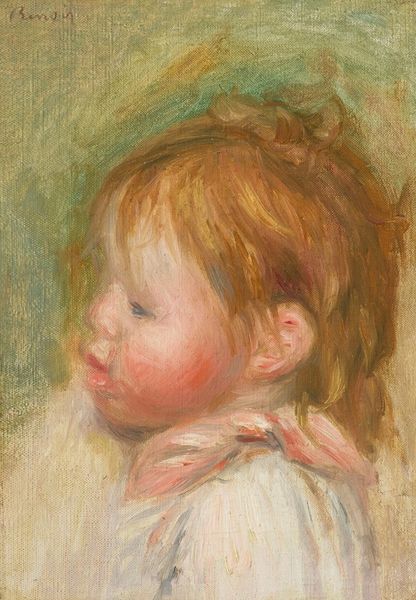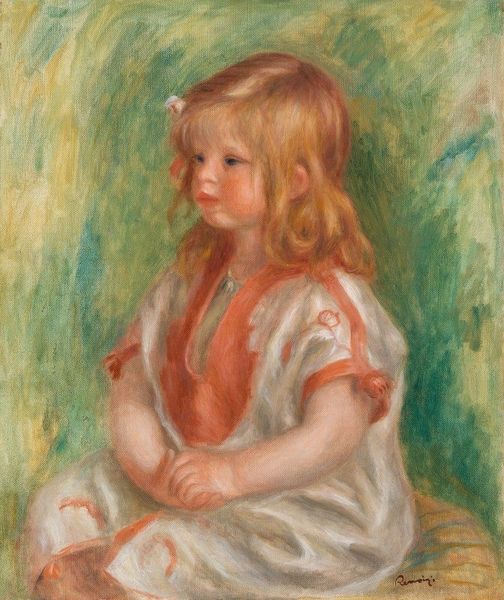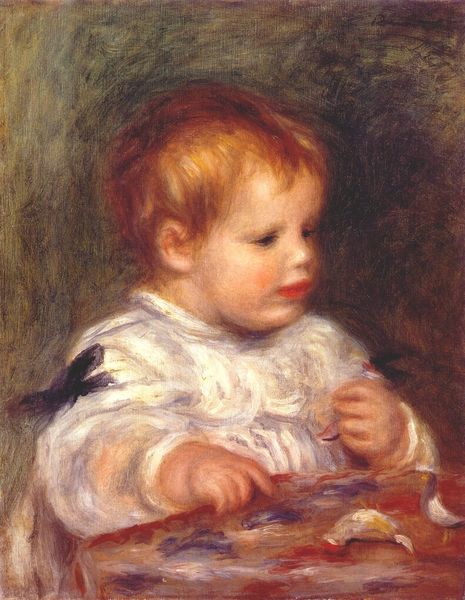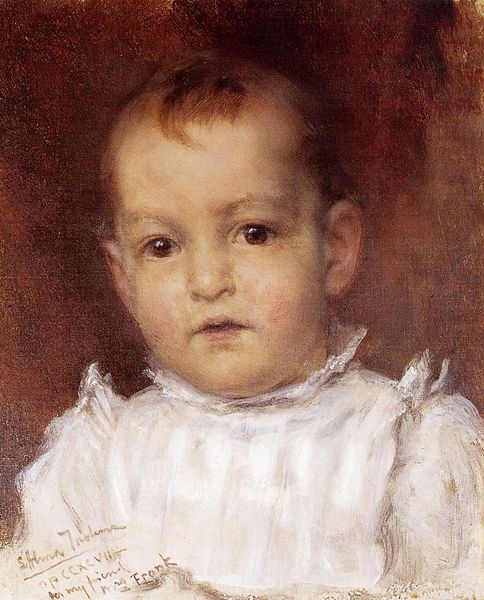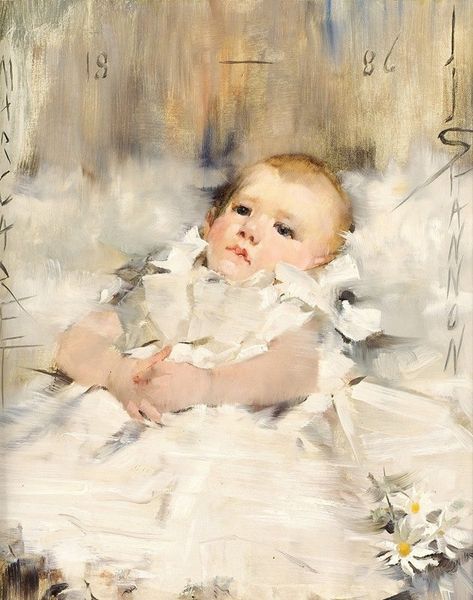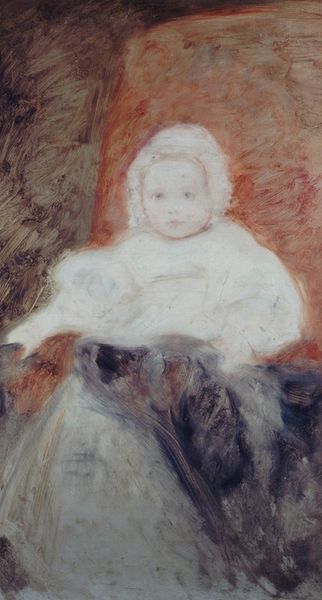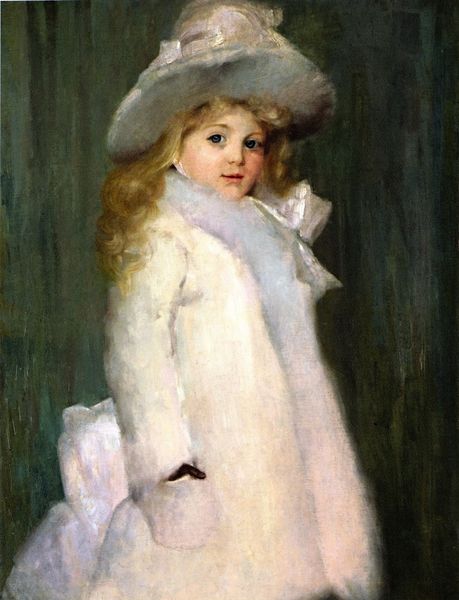
Copyright: Public Domain: Artvee
Pierre-Auguste Renoir captured Claude, his son, in oil on canvas, immortalizing a tender moment. The image embodies the values of the bourgeoisie in France during the late 19th century, where family and domesticity became central themes in art. The painting's soft brushstrokes and focus on light create an intimate portrayal, emphasizing the child's innocence and vulnerability. Renoir's style reflects the progressive values of the Impressionist movement, challenging the academic art traditions of the time by prioritizing subjective experience and capturing fleeting moments. This approach broke from the rigid constraints imposed by institutions like the Salon. The art market played a crucial role, shaping the demand for such intimate portraits that celebrated bourgeois ideals. Analyzing Renoir's "Portrait of Claude Renoir" through exhibition records, art criticism, and social histories of the period sheds light on the cultural values and institutional forces that influenced its creation and reception.
Comments
No comments
Be the first to comment and join the conversation on the ultimate creative platform.
